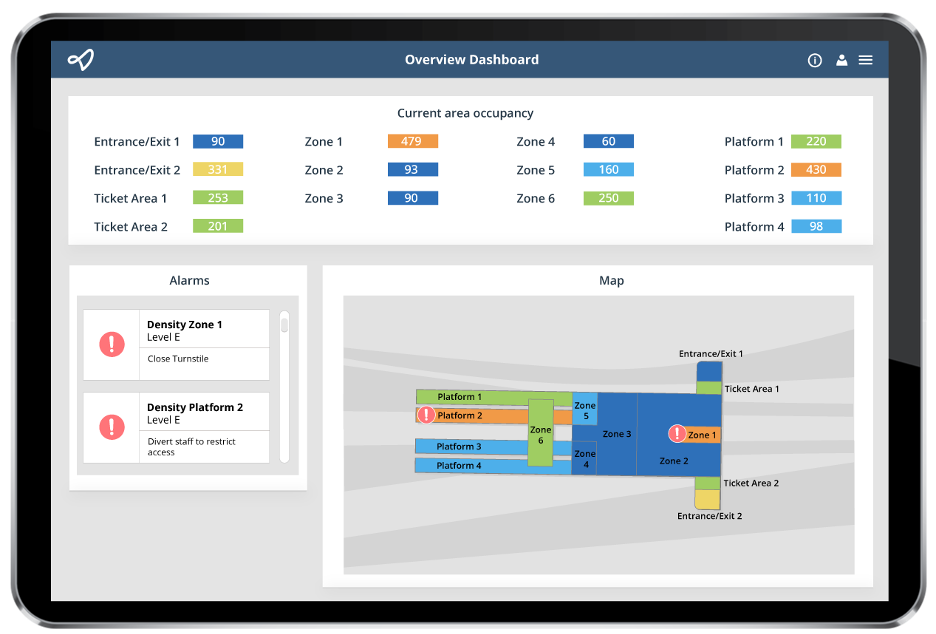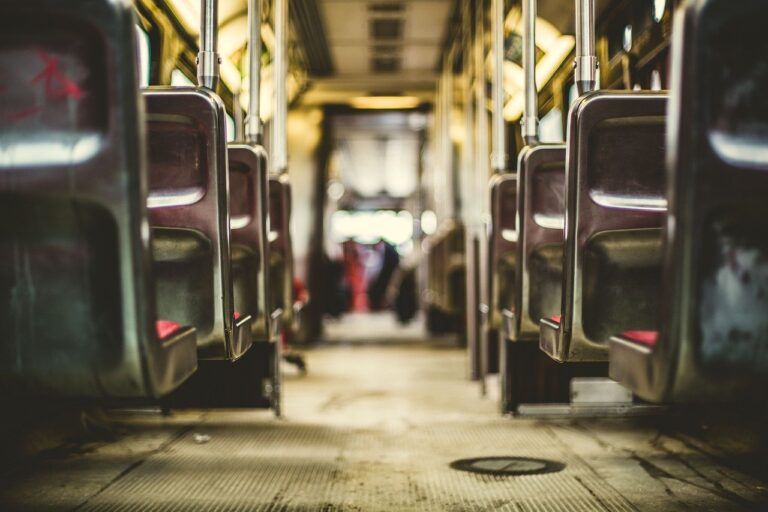Social distancing is something we’ve all started to get used to. Greeting people at a distance. Manoeuvring around other shoppers at the supermarket. Virtual meetings replacing physical ones.
Maintaining a safe distance seems doable in a lot of situations, but at a train station or subway? At peak hour before the pandemic hit, commuters rarely had space between them, let alone a distance of six feet or two metres apart.
So, what happens when economies start reopening? As lockdown restrictions are eased, transport authorities will face considerable challenges in preventing crowding and maintaining social distancing.
Keeping trains running, while protecting the health of passengers and staff, will require sweeping adjustments by operators on the front line. Ultimately, it will come down to the ability to predict and measure passenger movement and densities – when they arrive, where they dwell, where they board and alight – and using that knowledge to manage people flow and distribution.
Travelling together, apart
Machine learning technology and real-time monitoring may hold some of the answers.
Before the pandemic, operators typically relied on experience and historical data to get a sense of station arrival, wait times and train usage. And yet, there was little knowledge of the true time passengers spent at the station before departure and after arrival, let alone when they entered, exited or moved around.
In an unpredictable post-COVID-19 world, guesstimates like these, based on past times, are not only irrelevant, they’re not safe.
Instead, operators will need the help of real-time analysis and insights on people’s movement, to holistically manage passenger numbers across every area, and the distances between them. It’s only by considering the station as a whole, and understanding the interconnections between people, processes and trains, that operators can determine the most appropriate and sustainable way of protecting commuter safety.
Here are three ways transit operators can support social distancing in a post-Covid-19 world.
#1 Predict and pre-empt hotspots
Safe passenger separation will rely on the ability of operators to not only measure passenger density across the station in real time but to take pre-emptive action, to ensure distancing can be maintained. By understanding crowd density and how people move and dwell, operators can also improve the responsiveness of sanitation and disinfection processes, and move from a scheduled cleaning plan to a needs-based one.
An increasingly favoured approach is to combine the best mix of data capture technology, analytics and, decision metrics, to support the physical constraints of their station and areas of most concern.
Sensors for counting people and tracking movement
For tight areas like stairs and ticketing, 3D cameras provide unparalleled levels of people counting and dwell accuracy, although there are sometimes blind spots in their coverage as people move. WiFi/BLE sensors provide unmatched tracking capabilities. The most reliable and cost-effective way to gain occupancy and flow insight across the station, and in trains, is to combine the data from these multiple sensors into one analytics platform.
Analytics for capturing live crowding
Passenger density analytics capture the degree of crowding in real time. The risk is assessed, based on social distancing limits, crowd movement patterns, and the size of the area being monitored. Threshold breaches trigger alarms and automated actions, like closing turnstiles.
Metrics for data-driven decisions
Armed with information about crowd density and movement, operators can take decisive action across the station – capping entry to busy stairwells and escalators; advising of less-busy platform areas; and directing travellers to less-populated carriages.

#2 Fast-track commuter confidence
When restrictions are lifted, there’s unlikely to be a return to pre-COVID-19 ridership levels, at least until people feel assured it is safe to travel. Building passenger confidence will be key to the steady return of rail travel.
One way to achieve this is by giving people greater control over managing the space around them by making more informed travel decisions.
Data sharing for greater passenger control
Dynamic signage and mobile apps allow passengers to view departure times, and which stations are less crowded before they travel. While in the station, they can access information on queue lengths, the best place to wait, and less-busy train carriages. By communicating time since the last cleaning, operators can also demonstrate their commitment, to providing a safe and sanitary travel environment, boosting traveller confidence.
#3 Plan for a new world
The uncertain nature of Covid-19 presents a significant challenge to operators. To keep passengers flowing safely, and align train schedules and services with fluctuating demand, planning needs to be both accurate and dynamic.
As a return to work and tourism picks up at different paces, operators serving a diverse demographic may see a large difference in load factors, even within the same network.
Dynamic models for fluctuating demand
Forecasting and simulation should be centred around machine learning models that use real data – how people arrive, move and wait, including where they board, alight, transfer and terminate their journey.
With planning based on passenger behaviour analytics – train schedules, train distribution, staff rosters, maintenance and cleaning can all be adjusted to reflect changing patterns of travel.
Data-driven approach proven for crowd management
Pre-pandemic, many train and metro station operators were already exploring this data-driven approach, to help manage crowding, flow and future planning.
Some have rolled out a pilot sensor and analytics programmes, to gain a real-time overview of volumes, movement, wait times and train occupancy. This creates more reliable data, to inform service changes and improve safety on platforms. Besides live reporting, the data can be used used to detect and predict irregularities, allowing operators to deploy extra staff, change train distribution and minimise the risk of overfilled platforms.
Such data can not only help measure the flow of visitors entering and leaving a station, it can also count exact numbers, walking routes, length of stay, times of day, and how busy the different locations are.
The return to riding the rails
Protecting public health through social distancing will be a fact of life for many months to come. Only with an understanding of movement and dwell times, based on live data, can operators have any hope of minimising bottlenecks and keeping passengers safe.
Fortunately, passenger predictability solutions, designed to reduce crowding, can easily be adapted to support social distancing. They’re also quick to deploy and offer a fast return on investment. There are other long-term benefits too. By linking passenger behaviour data to ticketing information, operators can predict when and where fare evasion will occur.
With the right technology in place to understand people flow in and around the station, operators can ensure safe distancing, prevent commuter crush, and plan for smarter, safer railway journeys to come.
By Siobhan Boyle, Veovo





